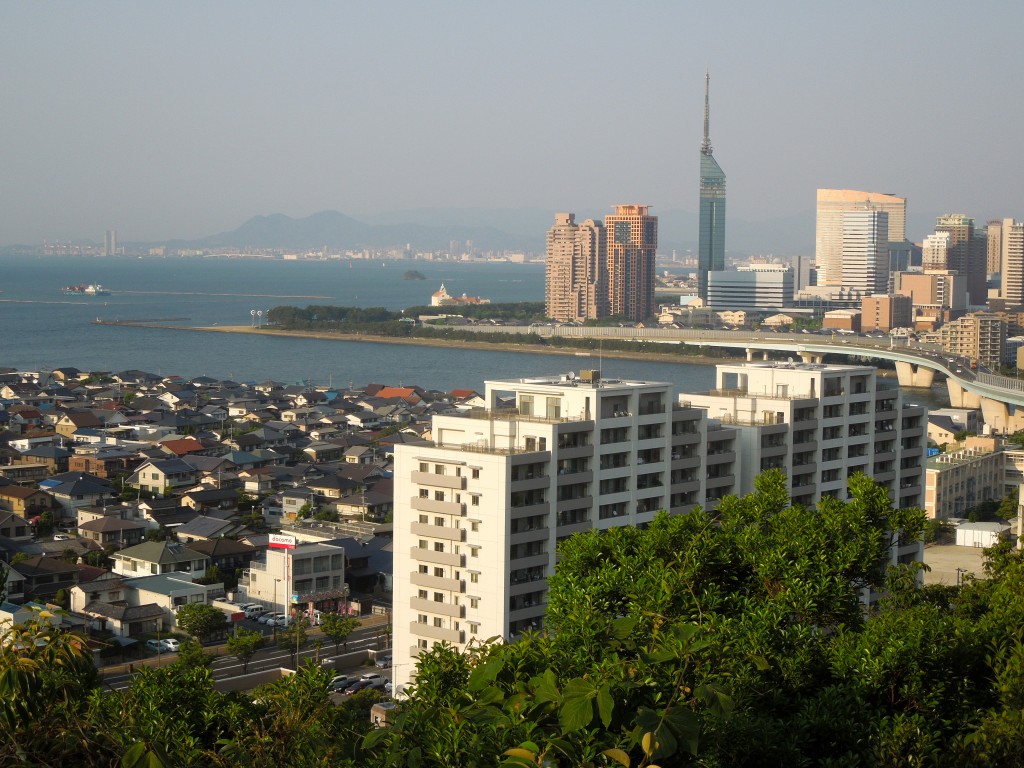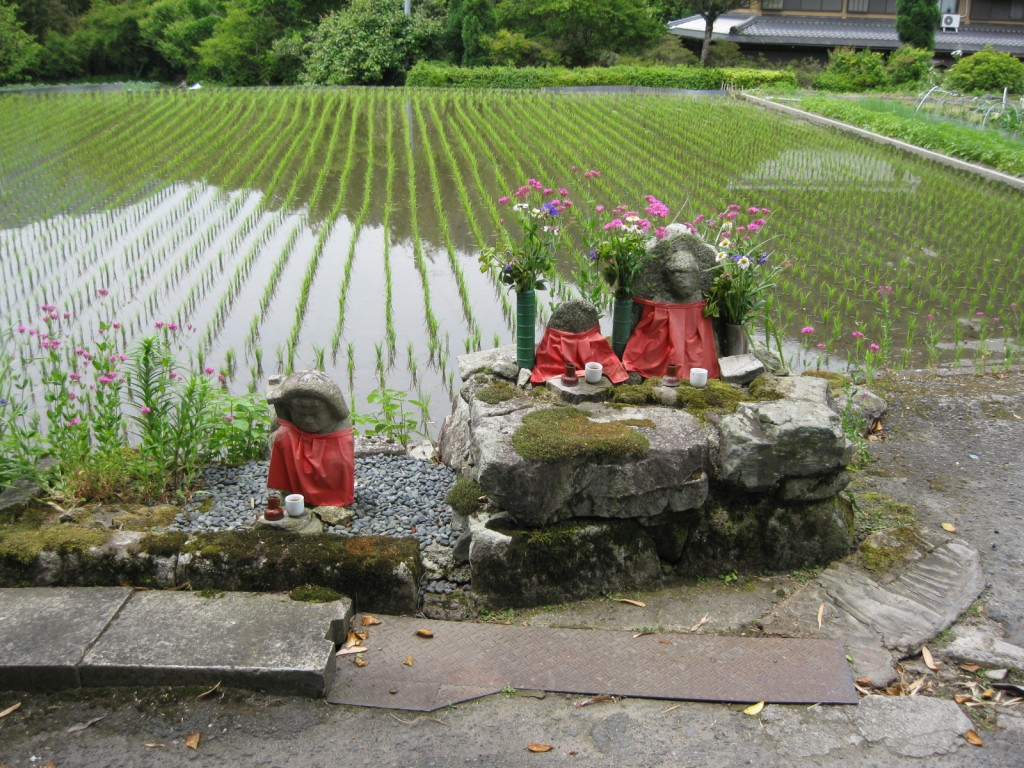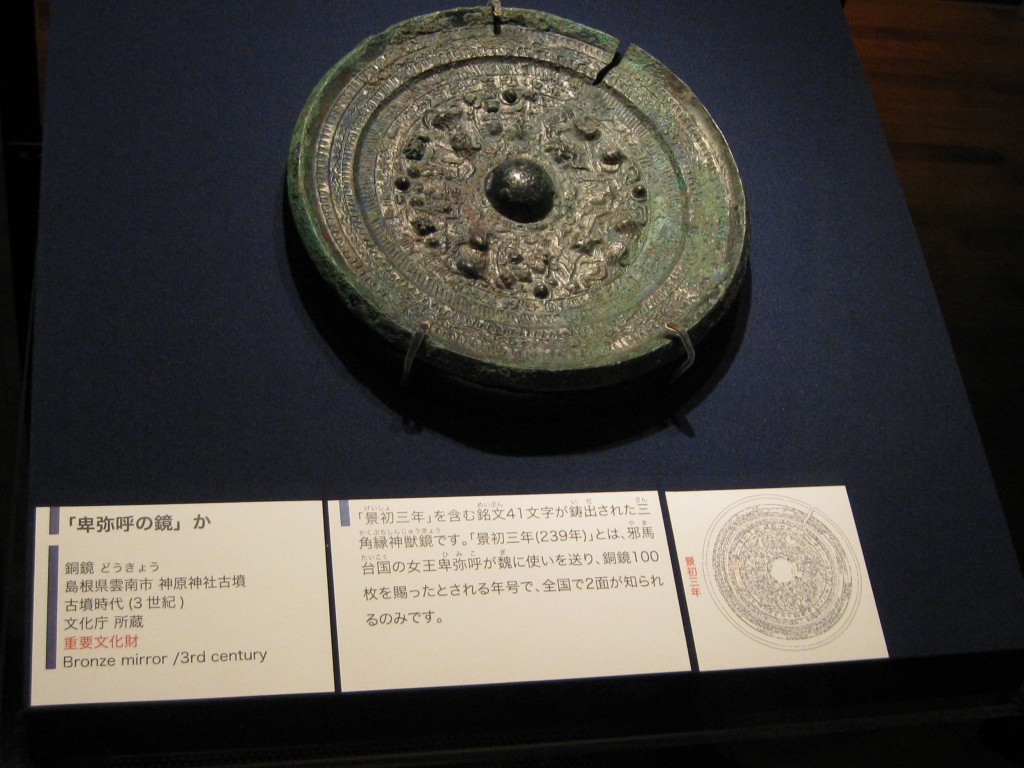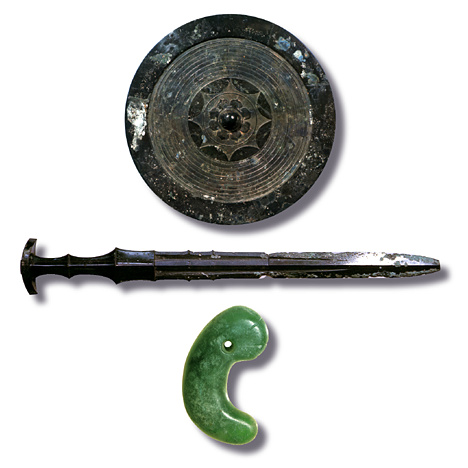
Fukuoka City with Hakata Bay, gateway to Korea and the continent
Roots of rural development [and Amaterasu?] found in northern Kyushu
By Kevin Short / Special to The Japan News September 23, 2014
Northern Kyushu is a very exciting area for anyone interested in the roots of the Japanese countryside landscape. Hakata Bay and Karatsu Bay are well-protected harbors facing north toward the Tsushima Straight and the southern tip of the Korean Peninsula. During the formative centuries of Japanese civilization, when the satoyama landscape was just developing, these bays were the entry ports for new people, ideas and technologies coming into Japan from Korea and the Asian mainland.

The modern form of rice came to Japan through northern Kyushu, where continental practices first establshed themselves
For example, sometime before 2,600 years ago, people arrived here with the tools and technologies necessary for irrigated rice cultivation. The oldest paddies in Japan are found at the Nabatake archeological site in Karatsu. Irrigated rice dramatically changed Japan’s landscapes. Marshes were drained and diked to form paddies, and streams diverted into a system of irrigation ponds, sluices and canals. Populations increased, and virgin forests were cut down and replaced by managed secondary habitats such as coppice woods, bamboo groves and thatch grass fields.
Thus was born the beautiful Japanese traditional countryside landscape, which can still be seen today in many areas. The great productivity of paddy rice, however, also revolutionized the regional socioeconomic fabric. Wealth could now be created and stored as surplus grain. Soon regional power centers, called kuni or koku, appeared. The capitals of these kuni were substantial towns surrounded by moats, walls and fences. Gradually the kuni grew in size and power. One of them, the Yamato, eventually evolved into the fledgling Japanese nation.
In the mid-third century, the Chinese kingdom of Wei sent an envoy to the Japanese islands. His observations were later recorded in the famous Records of the Three Kingdoms (Sangoku-shi, written around AD 280). The Wei ambassador described what appears to be a loose confederation, under the leadership of a kuni called Yamatai-koku, which was ruled by a mysterious shamaness-queen named Himiko. Unfortunately, the envoy’s travelogue is hard to interpret, and the actual location of Yamatai-koku has become one of the great controversies of early Japanese history.

A third-century bronze mirror, similar to those found in the burial mound
One of the confederation kuni mentioned in the text is the Ito-koku, said to be located to the north of Yamatai-koku, and to serve as a sort of port of entry for all goods and people coming into the Japanese islands. The location of this kuni can be clearly traced by historic place names, as well as by spectacular burials mounds and archaeological remains dating to precisely the time of the envoy’s visit.
The burial mounds, along with an interpretive museum, are located along the Zuibaiji River, with flows south from Hakata Bay into the northern foothills of the Sefuri Mountains. As a glamour-sensitive Celt I have long been enthralled by the idea of third-century shamaness-queens, and quickly planned a bicycle excursion to Itokoku.
The most spectacular display at the Itokoku History Museum is a superb reconstruction of a third-century burial mound that is thought to be that of the kuni’s queen. Grave goods buried along with her include a long sword, 40 bronze mirrors, strings of colorful glass beads, magatama comma-shaped jade earrings, and beautiful ear decorations in the style of third-century Chinese noblewomen. Interestingly, the mirror, sword and magatama jewels are the three symbols that Amaterasu the Sun Goddess is said to have passed on to her earthly descendents, the historic emperors and empresses of Japan.
Short is a naturalist and cultural anthropology professor at Tokyo University of Information Sciences.

The mirror, sword and magatama were adopted by the Japanese imperial family as their regalia

Thanks for sharing your info. I really appreciate your efforts and
I will be waiting for your further write ups
thank you once again.